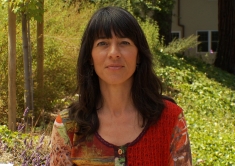Creatively and Effectively Protecting Rivers and Rights
This is a guest blog from Deborah Moore, the Chair of International Rivers' Board of Directors.
What an honor and thrill it is for International Rivers to receive this year’s MacArthur Award for Creative and Effective Institutions! As Chair of the Board of International Rivers, I feel that this award wonderfully affirms the strategies we have been pursuing to protect rivers at risk and the rights of communities that depend on them. And the words MacArthur chose in naming the award are instructive and relevant – “creative” and “effective” – and are inspiring us to be even more creative and effective at keeping our rivers free-flowing and healthy!
And creative we must be if we are to combat the threats to rivers and livelihoods from destructive dams. As Jason Rainey, International Rivers’ Executive Director, says in the video the MacArthur Foundation has created about us, "If we think of forests as the lungs of the planet, then rivers most surely are the arteries of the planet. They nourish ecosystems; they nourish communities. These arteries are being clogged by destructive big dams.”
Take a look at this animated map showing dam construction around the world over the last 100+ years and you will see visually what scientific assessments have measured: that 60% of our world’s rivers have been fragmented, and water flows disrupted by dams and channelization projects. Our remaining undammed rivers are still at risk from the relentless dam-building boom, with the new drive for the false promise of “clean, green” hydropower and the continued pressure to meet human needs for water, food and energy. As a result, aquatic ecosystems and species are being lost at a greater rate than any other type on the planet. Freshwater fisheries that provide the primary source of protein for millions of people in the Mekong and Amazon river basins are at risk of being extirpated. The Amazon River is home to more than 3,000 species of fish, many of which are at risk from the construction of more than 60 planned dams in Brazil alone.
We all depend on these healthy freshwater ecosystems for food, flood protection, clean water, and our very cultures and well-being. The communities that depend very directly for their livelihoods on these rivers and resources are at greatest risk of having their entire cultures wiped out. Already, 60-80 million people have been forcibly displaced by large dams – mostly poor and indigenous communities – and another estimated 500-800 million people downstream of dams have been negatively affected. At a huge economic cost of about $1-2 trillion invested globally, we must pursue better solutions to meet human needs that are more sustainable and just.
In Asia, Africa, and Latin America – in river basins considered most “at risk” – International Rivers is working in solidarity with communities threatened by some of the world’s most destructive dam projects. At the same time, we're promoting sustainable alternatives to meet the energy and water needs of the people most in need of them. Viable alternatives to big dams include energy and water conservation; solar, wind and other renewables; and small-scale, decentralized, community-based solutions. We use science, rigorous policy analysis and strategic advocacy to assist our partners across the globe in defending their communities’ and their rivers’ survival. Some of our key strategies are to stop the financing of these dams and change the investment policies and practicesof dam financiers like the World Bank, national development banks such as the ones in China and Brazil, and other public and private investors fueling river destruction.

We’ve had many victories, despite the David vs. Goliath nature of fighting these well-funded mega-projects. We've helped defeat or delay projects like the Pakitzapango Dam threatening the Ashaninka indigenous community in the Peruvian Amazon; the Hidrovia Paraguay-Paraná project threatening South America’s Pantanal wetlands; and the Myitsone Dam planned for Burma’s Irrawaddy River. We are fighting battles – and winning interim victories – to cancel, delay, stop, or modify projects underway or pending decisions. Some of these projects include the Belo Monte Dam in Brazil, the Gibe III Dam in Ethiopia, and the Xayaburi Dam in the Mekong River basin in Southeast Asia. We're working with partners in South Asia and the Himalayas on emerging research about maintaining adequate flows in rivers to protect ecosystems – “environmental flows” – and we're educating decision-makers in Africa about how new dams will actually exacerbate the risks of climate change.
But constant vigilance is required and the world is changing, so our strategies must change too. While we used to work to influence the financing of dams by the World Bank, China is now the biggest funder of dams globally. We're working to build our capacity to support our partners on the ground in regions most threatened by dams. So International Rivers will use its $750,000 MacArthur Award for Creative and Effective Institutions to build its reserves, strengthen regional offices in Asia, Africa and South America, and expand global awareness and support for the movement for healthy rivers and human rights. Our talented staff and committed Board stand ready to implement these initiatives, and I thank them for their passion, smarts, and tenacity.
On behalf of the International Rivers Board and Staff, I want to express our gratitude and appreciation to the MacArthur Foundation for this award and recognition. This boosts our confidence and energizes us to do more to protect our rivers. The way we see it, we are all in this together – one river, one sea, one people. Forward paddle – let’s dig in to the current and find our way to a healthy future!




